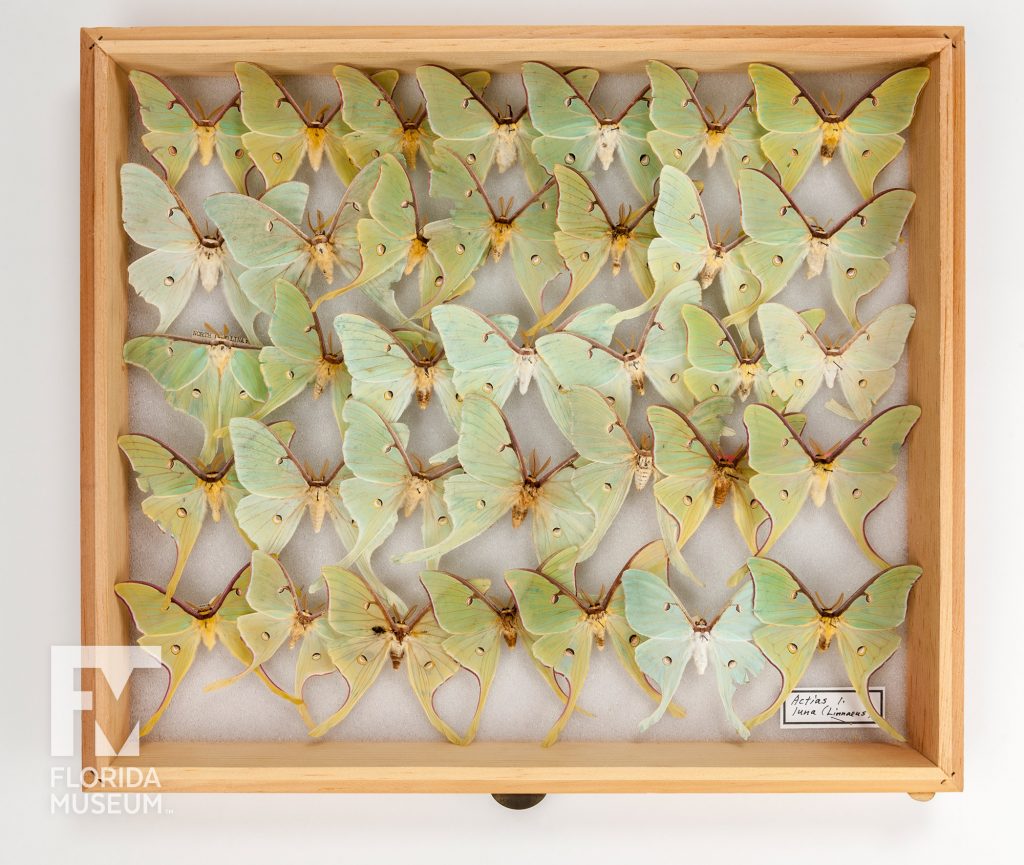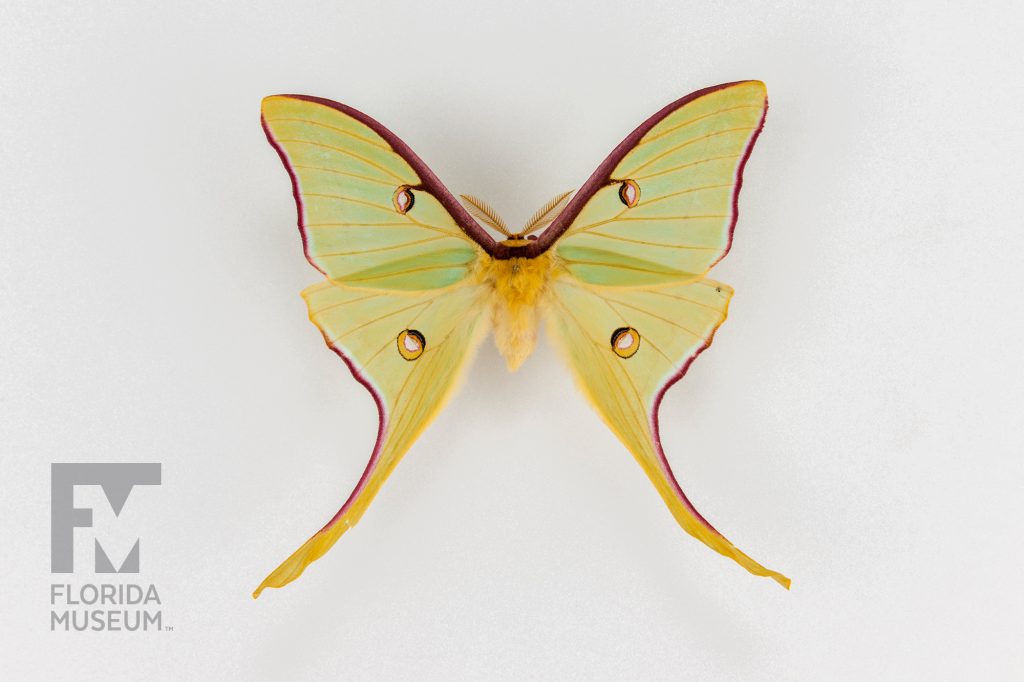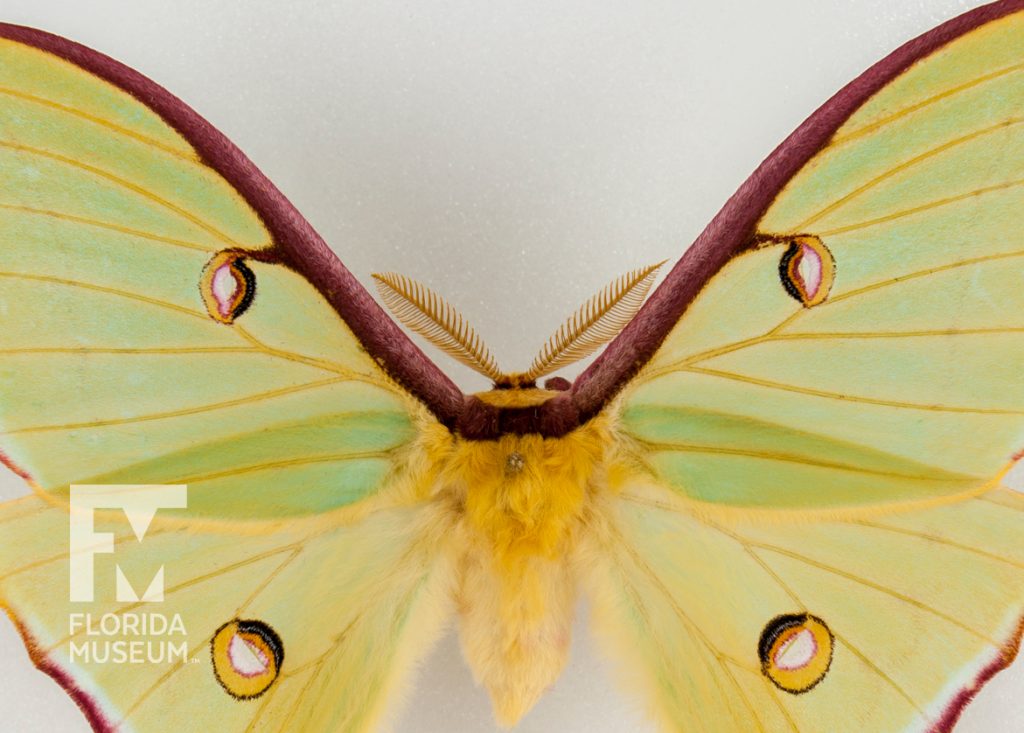Evolutionary changes are sometimes driven by relationships to other organisms. Researchers discovered that the Luna Moth evolved long spinning tails to defend against bats in a 60-million-year-old nocturnal “evolutionary arms race.”
Summary
Luna Moth (Actias luna)
From Alachua Co., Florida, 2016
Collection
Story
I really think Luna Moths are one of the most spectacular organisms on the planet. They are really incredible in terms of their color — they’re light green — and they’re really big and have tails. One of the things that I find really amazing about them is that they’re very common in North America, or at least in eastern North America, and they come to our lights pretty easily at night. So they’re active at night and they’ll oftentimes come to your porch light and you’ll get to see them.
What’s truly interesting about them is that they have these very long tails that, until recently, we didn’t know anything about them and why they have them. But after work with some of my collaborators we decided to test why they might have these tails and discovered that they’re used as acoustic deflectors against predatory bats. So bats use echolocation to hunt their prey and many of their prey are insects and moths. So these tails that these Luna Moths have actually spin behind their bodies in a manner that looks somewhat like a propeller. And the propeller appears to look like a smaller moth behind the larger moth and the bat that’s hunting will get lured toward this tail or the “smaller moth” and then bite the tail off and the Luna Moth can then escape.
One thing we know is that there’s a lot of other species that have tails in the world. So what we’re trying to do now is use the Museum collection and understand how these shapes and forms of different tails have arisen and why these moths have them.
Akito Kawahara
Associate Curator, McGuire Center for Lepidoptera and Biodiversity*
Florida Museum of Natural History
Additional Information
Read: Luna moths evolved long spinning tails to defend against bats
Exhibit
On display Sept. 23, 2017-Jan. 7, 2018, Rare, Beautiful & Fascinating: 100 Years @FloridaMuseum celebrated the Museum’s rich history. Each Museum collection was asked to contribute its most interesting items and share the stories that make them special. Though the physical exhibit is closed, this companion website remains online, providing an opportunity to experience the Florida Museum’s most treasured specimens.
Exhibit Area: Objects Tell Stories
Theme: Evolution
 Want to see more? Explore more than 300 breathtaking color photos of plants, animals, fossils and cultural heritage materials from the Florida Museum of Natural History’s collections in the award-winning book All Things Beautiful available from the University Press of Florida.
Want to see more? Explore more than 300 breathtaking color photos of plants, animals, fossils and cultural heritage materials from the Florida Museum of Natural History’s collections in the award-winning book All Things Beautiful available from the University Press of Florida.
*This title was accurate at the time the exhibit was on display in 2017. Please visit the collection website to verify current staff and student information.


